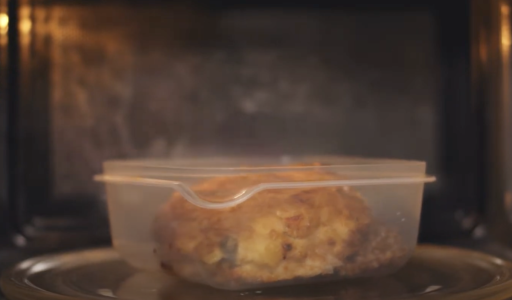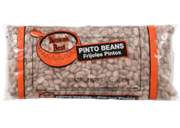The surprising history of leftovers in American kitchens
By
Veronica E.
- Replies 0
Most of us have a mixed relationship with leftovers.
Sometimes they’re a lifesaver for a quick lunch the next day, and other times they’re a forgotten container hiding in the back of the fridge.
Either way, leftovers have become a normal part of American life, but they weren’t always this way.
The very idea of storing yesterday’s meal for later only emerged once households had the tools to keep food fresh.
Behind every Tupperware container is a fascinating history that connects survival, convenience, and creativity in the kitchen.

For centuries, people had no way to safely keep cooked food for more than a day or two.
Before refrigeration, the only option was to preserve ingredients through pickling, salting, drying, or curing.
Cookbooks from the 1800s didn’t mention “leftovers”—instead, they focused on reusing meat and produce immediately by turning them into stews, pies, or soups.
The arrival of the icebox in the early 1900s changed everything.
Families could now keep recognizable portions of last night’s dinner intact, marking the birth of the leftover as we know it.
In the early 20th century, the meaning of leftovers was tied closely to patriotism and thrift.
During World War I, government campaigns urged Americans to conserve food, encouraging households to “serve just enough” and “use what is left.”
Families were praised for stretching meals, and wasting food was considered unpatriotic.
The Great Depression reinforced this approach, with magazines like Good Housekeeping telling readers that “leftovers shouldn’t be left over.”
Casseroles and soups—meals built to use scraps—became essential at the American dinner table.
After World War II, rising affluence and new technology changed how people thought about cooking.
Microwaves, frozen meals, and TV dinners made it easier to start fresh each day, and leftovers sometimes carried the stigma of being second-best.
Still, the idea of the restaurant “doggy bag” helped make leftovers practical outside the home.
By the 1970s and 80s, growing awareness of food waste brought renewed appreciation for saving uneaten portions.
Leftovers remained part of everyday life, even in an era of abundance.
Today, leftovers are being embraced in new ways.
Rising grocery prices and concerns about food waste have encouraged people to make the most of what they cook.
Social media has even given rise to “nextovers”—creative recipes that turn last night’s meal into something entirely new, like turkey sandwiches reinvented as pot pies or roasted vegetables repurposed into frittatas.
Beyond saving money, leftovers can make healthy eating easier by encouraging more home-cooked meals and portion control.
What was once seen as old-fashioned has become a smart and sustainable choice.
From wartime kitchens to today’s creative recipes, leftovers have always reflected how we adapt, save, and share through food.
Embracing them isn’t just about thrift—it’s about honoring tradition, reducing waste, and enjoying good meals in new ways.
The next time you peek into your fridge, remember: those leftovers may just be the start of something delicious.
Read next:

Do you have a family recipe that makes the most of yesterday’s meal? Maybe you’ve discovered your own trick for stretching food a little further.
Leftovers carry stories of both thrift and creativity, and sharing them helps keep those traditions alive. We’d love to hear your favorite ways to give leftovers a second life!
Sometimes they’re a lifesaver for a quick lunch the next day, and other times they’re a forgotten container hiding in the back of the fridge.
Either way, leftovers have become a normal part of American life, but they weren’t always this way.
The very idea of storing yesterday’s meal for later only emerged once households had the tools to keep food fresh.
Behind every Tupperware container is a fascinating history that connects survival, convenience, and creativity in the kitchen.

Leftovers have evolved from a necessity to a creative part of the modern kitchen. Image Source: YouTube / Institute of Food Technologists - IFT.
From survival to convenience
For centuries, people had no way to safely keep cooked food for more than a day or two.
Before refrigeration, the only option was to preserve ingredients through pickling, salting, drying, or curing.
Cookbooks from the 1800s didn’t mention “leftovers”—instead, they focused on reusing meat and produce immediately by turning them into stews, pies, or soups.
The arrival of the icebox in the early 1900s changed everything.
Families could now keep recognizable portions of last night’s dinner intact, marking the birth of the leftover as we know it.
Also read: Think it’s safe? This leftover might be more dangerous than you realize
Leftovers during hard times
In the early 20th century, the meaning of leftovers was tied closely to patriotism and thrift.
During World War I, government campaigns urged Americans to conserve food, encouraging households to “serve just enough” and “use what is left.”
Families were praised for stretching meals, and wasting food was considered unpatriotic.
The Great Depression reinforced this approach, with magazines like Good Housekeeping telling readers that “leftovers shouldn’t be left over.”
Casseroles and soups—meals built to use scraps—became essential at the American dinner table.
Also read: What really happens to Walmart’s leftover cake scraps, according to an employee
From postwar prosperity to convenience culture
After World War II, rising affluence and new technology changed how people thought about cooking.
Microwaves, frozen meals, and TV dinners made it easier to start fresh each day, and leftovers sometimes carried the stigma of being second-best.
Still, the idea of the restaurant “doggy bag” helped make leftovers practical outside the home.
By the 1970s and 80s, growing awareness of food waste brought renewed appreciation for saving uneaten portions.
Leftovers remained part of everyday life, even in an era of abundance.
Also read: Creative ways to turn holiday leftovers into new meals
A modern revival
Today, leftovers are being embraced in new ways.
Rising grocery prices and concerns about food waste have encouraged people to make the most of what they cook.
Social media has even given rise to “nextovers”—creative recipes that turn last night’s meal into something entirely new, like turkey sandwiches reinvented as pot pies or roasted vegetables repurposed into frittatas.
Beyond saving money, leftovers can make healthy eating easier by encouraging more home-cooked meals and portion control.
What was once seen as old-fashioned has become a smart and sustainable choice.
Also read: The right way to reheat chicken and keep your leftovers safe
Tips for making the most of leftovers
- Store smart: Use clear containers, add labels, and keep items visible to avoid waste.
- Reheat wisely: Some foods taste fine cold, while others benefit from gentle reheating.
- Get creative: Transform basics like rice, chicken, or mashed potatoes into entirely new dishes.
- Freeze for later: If you won’t eat something soon, freezing helps cut down on spoilage.
From wartime kitchens to today’s creative recipes, leftovers have always reflected how we adapt, save, and share through food.
Embracing them isn’t just about thrift—it’s about honoring tradition, reducing waste, and enjoying good meals in new ways.
The next time you peek into your fridge, remember: those leftovers may just be the start of something delicious.
Read next:
- Think twice before microwaving these 15 common foods
- Experts warn: Is the way you store leftovers secretly putting you at risk?
- The surprising second life of Costco's bakery leftovers
Key Takeaways
- Leftovers became common in the early 20th century when households adopted iceboxes and could store cooked food safely.
- Before refrigeration, people relied on preservation methods such as pickling, salting, and drying instead of keeping food in its cooked form.
- During World War I and the Great Depression, eating leftovers was considered patriotic and a sign of resourcefulness.
- Over time, attitudes shifted with technology, but rising food costs and sustainability concerns are reviving the value of leftovers today.
Do you have a family recipe that makes the most of yesterday’s meal? Maybe you’ve discovered your own trick for stretching food a little further.
Leftovers carry stories of both thrift and creativity, and sharing them helps keep those traditions alive. We’d love to hear your favorite ways to give leftovers a second life!






